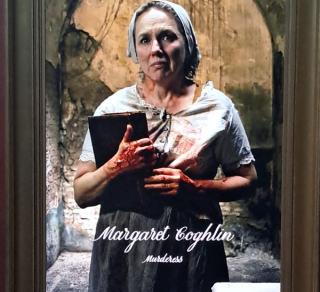Hobart Penitentiary Nomination for National Heritage List
The Hobart Penitentiary Chapel and Criminal Courts site is of outstanding significance to Australia for its central role in the convict administration, distribution and record keeping and its embodiment of the related themes of criminal punishment and reform. The Penitentiary Chapel is the surviving part of the Hobart Prison Barracks (later Penitentiary and later still, Hobart Gaol) established in 1821, which dealt with the highest number of convicts of any Australian convict facility. Of the 62,500 male convicts transported to Tasmania, more than 50,000 were processed through the Hobart Penitentiary courtyard, quartered in the Barracks, and attended services in the Chapel. This represents 40% of the 160,000 convicts transported to the Australian colonies. The Penitentiary demonstrates the nineteenth-century European strategy of using forced convict labour to build global empires.
John Lee Archer’s design of the three-wing (cruciform) Penitentiary Chapel (constructed 1830-34) was the physical expression of Lieutenant-Governor George Arthur’s dual concerns of punishment and reform of criminals through religious instruction. The 1,500-seat Chapel uniquely incorporates 36 solitary confinement cells under its raked floor. The design ensured that prisoners in the solitary cells and those receiving sermons in the galleries above could hear each other, be fully aware of their respective positions, and be prompted to consider the consequences of their actions. Descriptions of services in the Chapel, such as those by exiled American patriot Linus Miller in 1840, indicate convict resistance to reform by the evangelizing Word, an early aspect of the anti-authoritarian Australian character.
The extant gallows, used from 1857 to 1946, are one of two operational gallows in Australia. The gallows reflect shifting ideologies regarding capital punishment. Originally used for public hangings at the Murray Street gaol, the gallows were moved to an enclosed execution yard at the Penitentiary site in 1857. Between 300 and 400 criminals were executed using the extant gallows beams at the Murray Street Gaol followed by 32 prisoners at the present site, with the last hanging in 1946.
After convict transportation to Van Diemen’s Land ended in 1853, the Penitentiary was repurposed as the Hobart Gaol, illustrating its evolving role within Tasmania’s criminal justice system. Prisoners from Port Arthur and the Cascades Female Factory were relocated here when those sites closed in 1877. The Penitentiary Chapel’s adaptation included courtrooms for the Supreme Court of Tasmania and Hobart Magistrate’s Court, along with a reduced prison chapel retaining the original pulpit, communion table and other fittings.
The Penitentiary has been managed by the National Trust of Australia (Tasmania) since 1985. The National Trust belongs to an international movement and is Australia’s largest community organization that advocates for the built environment. Community volunteers secured the return of important building fabric and Moveable Cultural Heritage from Risdon Prison for re-integration into the site through conservation programs, achieved through fundraising and grant programs.
Today, the Penitentiary is the location for an innovative interpretation program, which aims to provide visitors with a deeper involvement with the convict legacy. As a result of male convict arrivals being processed on site 1821-1853, Tasmania’s uniquely complete convict records were housed on site. They were discovered in the Gaoler’s House in 1963, transferred to the Tasmanian Archives and Heritage Office collection and inscribed on the UNESCO Memory of the World Register in 2006. National Trust and Digital History Tasmania volunteers have transcribed those records over 20 years.
Investment by the Tasmanian Government has enabled the National Trust to return the digitized data from these records to the site, activated in the form of the Convict Memorial. The Memorial allows visitors to explore the records of the 75,000 convicts transported to Van Diemen’s Land in terms of individual biographies and a range of themes including the different ethnicities of the convicts, trades, tattoos, punishment records and health outcomes. The Convict Memorial seeks to re-unite built heritage, moveable cultural heritage and the documentary record. It seeks to send tourists on journeys of discovery to convict sites across Tasmania, activating Tasmania’s convict sites as tourism resources and thereby contributing to their economic sustainability.
The Hobart Penitentiary Chapel and Criminal Courts site plays a critical role in interrogating Australia’s convict past, serving as a hub for tourism and education. Its archaeological richness, extensive convict processing history, unique combination of punishment and reform, and innovative interpretative program underscore its outstanding heritage value to the nation.















